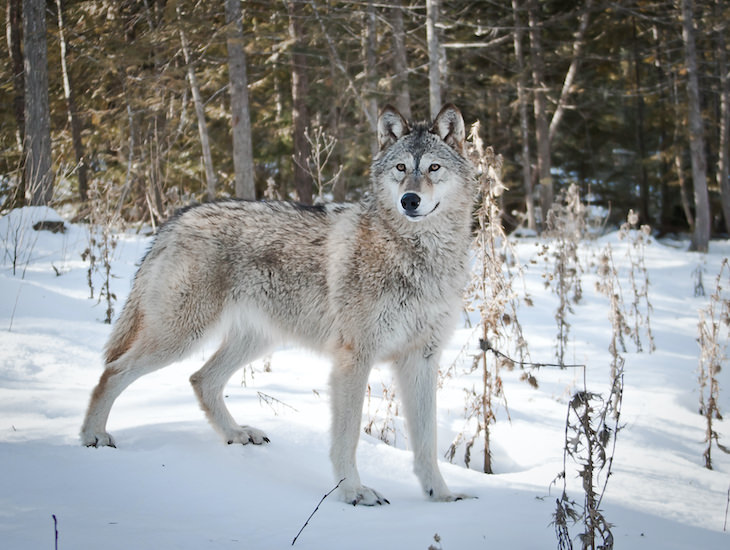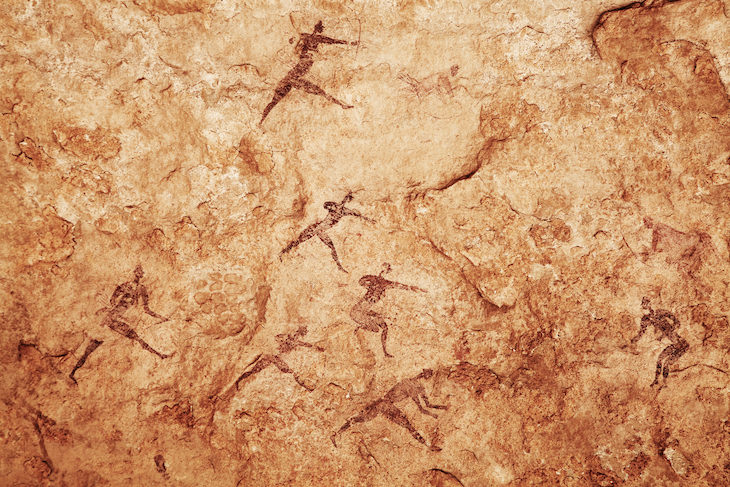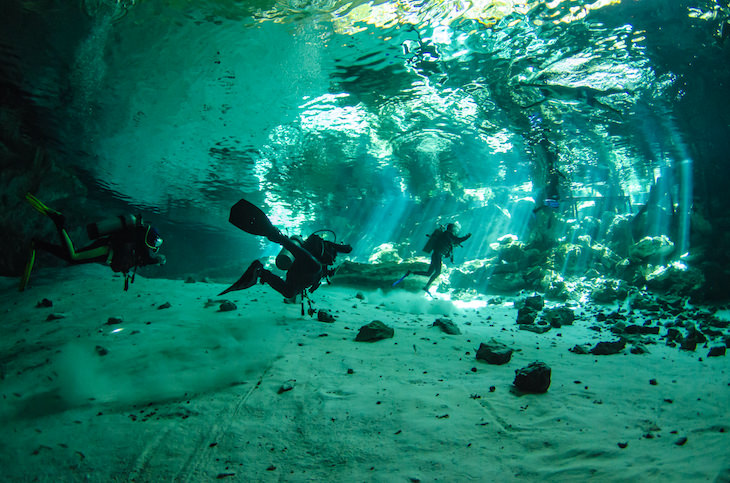

As we noted earlier, Homo sapiens is only one of the many species of humans that used to exist. Around 300,000 years ago, there were no less than nine species. Roughly 10,000 years ago, eight of those were gone. What caused this mass extinction? Scientists are unable to fully explain, but the sole survivor, Homo sapiens (the direct ancestor of modern humans) could be responsible.
When H. sapiens emerged from Southern Africa and started spreading to other continents, the balance was shifted. When humans became cooperative hunters, we essentially had no predators. And without predation controlling our numbers, populations grew and grew. This naturally led to conflicts between tribes over resources, and territory. Warfare, instead of predation, became a check on population growth.
The elimination of all other species wasn’t planned of course, but H. sapiens had the advantage of more sophisticated tools and weapons, and a more developed ability to plan and strategize. Interestingly, Neanderthals lasted the longest - a few millennia.

On the now Indonesian island of Sumatra some 74,000 years ago, an erupting supervolcano brought humans to the brink of extinction. The eruption of Mount Toba was the worst volcanic eruption in the last two million years - the ash and debris spread for thousands of miles and caused temperatures to plummet. The eruption’s effects were felt as far away as southern Africa, where they impacted early humans and maybe even caused some of them to venture out of Africa.
More recent evidence, however, showed that the humans who survived the Toba eruption and stayed in southern Africa, namely Pinnacle Point and Vleesbaai, ended up flourishing. How they survived the severe volcanic winter remains a mystery.

The first-ever dogs to be domesticated seem to be Eurasian gray wolves. There are several theories on how this happened. One theory suggests that human proliferation reduced the amount of available prey for wolves, making them reliant on humans for scraps. Others believe it was simply a mutually beneficial relationship.
The wolves were provided with food by the humans without the hassle of hunting down prey, and in return, the humans had extra protection. Whenever more dangerous predators were nearby, the wolves would act as an alarm system and alert their fellow humans. Whatever the case may be, we’re all grateful for dogs to this day.
Related: 5 Fascinating Prehistoric Cave Paintings

This is probably the one thing that actually sets humans apart from other species. All animals have distinct forms of communication, but only humans have the ability to express and verbalize abstract concepts, such as religion, morals, and other things that cannot be observed with the five senses. It is believed that this unique ability was instrumental for Homo sapiens to prevail.
Cave paintings, carvings, and musical instruments allowed early modern humans to not only understand abstract concepts but also communicate them to each other, form stronger bonds, make complicated strategies, and deceit others. This, eventually, was the ultimate weapon.
Archaeologists exploring the Borders Cave in South Africa found evidence that ancient humans were making comfortable grass beds 200,000 years ago. This is interesting in itself, but what really caught the researchers' attention is the evidence that the cave dwellers used to torch their beds.
Besides confirming that they produced fire at will, it also showed that they were pest-control experts. The ashes of the old beds were layered into new bedding together with insect-repelling plants. Today, we know that ash is deadly to insects because it blocks their breathing. But without knowing all the details, this community understood the value of ash as a means to keep their beds pest-free.
Related: 3 Exciting Archaeological Discoveries Made in 2020

Some of the first people living in the Americas lived in Mexico’s Yucatan Peninsula. Skeletons were found in certain caves of the region, but for years, no one was able to explain their presence. Recently, in 2020, divers have made an incredible discovery - a large ocher mine, running 7 kilometers (4.3 miles) into three different cave systems.
The first ocher was extracted around 12,000 years ago and people continued to mine this prized pigment for the next 2,000 years. The end of the Ice Age flooded the site and kept it underwater for 8,000 years. The pristine artifacts gave insight into the ancient miners' techniques and explained why human remains were found in Yucatan in the first place.

Something that most of us take for granted is color. But did you know that old scripts never mentioned the color blue? Not even those written in ancient Arabic, Hebrew, or Chinese. The Egyptians were the first to write down a description of blue after they invented the first blue dye. When you think about it, apart from the sky, there isn’t much in nature that is inherently a vibrant blue. This raises the question: just because there was no word for blue, does that mean our ancestors couldn't see it?
Several experiments tried to answer that question. In 2006, a psychologist from Goldsmiths University of London named Jules Davidoff conducted a study with members of the Himba tribe from Namibia. In their language, there is no word for blue and no real distinction between green and blue. When the Himba participants were shown a circle with 11 green squares and one blue square, they struggled to tell Davidoff which of the squares was a different color. This and other similar experiments suggest that, until they had a word for it, it's likely that our ancestors didn't actually see blue. Or, more accurately, they probably saw it as we do now, but they never really noticed it.
If you found this article interesting, share this information with family and friends!